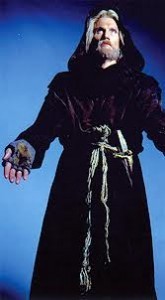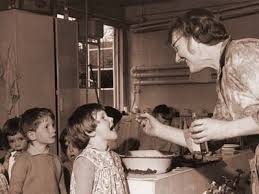Rejection: Good for the Writer’s Soul?
 Send to Kindle
Send to Kindle
There’s a schism in the writing world. Messianic advocates of self-publishing tout its benefits; skeptical opponents counter with the lack of all the services provided by  publishers. As a novelist, blogger, and former literary agent, I’ve read countless iterations of both positions, which keep changing as self-publishing evolves. Just a few years ago, publishing and self-publishing were separate worlds; now they’re developing a symbiotic relationship, each feeding off the other. Success in self-publishing can lead to multi-book contracts with major publishers; while many published authors, formerly sidelined as “midlist” authors, are reviving their careers and making good money through self-publishing. A new species is emerging: hybrid writers with a foot in each camp.
publishers. As a novelist, blogger, and former literary agent, I’ve read countless iterations of both positions, which keep changing as self-publishing evolves. Just a few years ago, publishing and self-publishing were separate worlds; now they’re developing a symbiotic relationship, each feeding off the other. Success in self-publishing can lead to multi-book contracts with major publishers; while many published authors, formerly sidelined as “midlist” authors, are reviving their careers and making good money through self-publishing. A new species is emerging: hybrid writers with a foot in each camp.
As the tools available to self-publishers continue to develop, they may overcome many of the industry’s current deficits. But the greatest drawback to self-publishing is one that can never be overcome, because it is intrinsic to the enterprise: the lack of rejection.
Before the advent of simple, do-it-yourself e-publishing, when publishers ruled the planet, rejection was an inescapable part of the writer’s existence. Most published novelists were turned down many times, often on multiple books, before breaking into print. Most “first” novels passed through a gauntlet of rejection by agents and publishers before finding a home. No one got through unscathed.
Rejection isn’t some sort of japish frat hazing we can all laugh about later. It hurts badly and over time has a cumulative effect on the writer’s psyche. Many give up. Depression is common. John Kennedy O’Toole committed suicide at the age of 31, due in part to repeated rejections of his novel, A CONFEDERACY OF DUNCES, which was published years later and won a posthumous Pulitzer Prize. Some writers go a little crazy, or a lot. I wrote about one such writer in A DANGEROUS FICTION, but it happens in real life, too. Last year, a West Coast literary agent was stalked and attacked by a disgruntled writer.
Connoisseurs of rejection, aka writers, know that not all rejections are the same. They fall into three basic categories:
 Homicidal. One publisher called Nabokov’s Lolita “overwhelmingly nauseating” and recommended that it be buried under a stone for a thousand years. Another predicted that Mailer’s The Deer Park would “set publishing back 25 years.” When Hunter Thompson was responsible for evaluating submissions to Rolling Stone magazine, he wrote one rejection letter that started with “You worthless, acid-sucking piece of illiterate shit! Don’t ever send this kind of brain-damaged swill here again. If I had the time, I’d come out there and drive a fucking wooden stake into your forehead,” and went downhill from there.
Homicidal. One publisher called Nabokov’s Lolita “overwhelmingly nauseating” and recommended that it be buried under a stone for a thousand years. Another predicted that Mailer’s The Deer Park would “set publishing back 25 years.” When Hunter Thompson was responsible for evaluating submissions to Rolling Stone magazine, he wrote one rejection letter that started with “You worthless, acid-sucking piece of illiterate shit! Don’t ever send this kind of brain-damaged swill here again. If I had the time, I’d come out there and drive a fucking wooden stake into your forehead,” and went downhill from there.
Unhelpful. These include form letters (“We regret that your work does not quite suit our list…”) and, cruelest of all, silence.
“Close but no cigar.” These “good rejections” come with useful notes from the agent or editor and sometimes an invitation to revise and resubmit. They’re a sign that the work is almost but not quite where it needs to be.
Rejection hurts. The more you’ve put into a book, the more it hurts. And yet I suspect that rejection is the cod liver oil of the writer’s diet. It tastes vile but can have salutary effects.
First, insomuch as it acts as a spur to revision, rejection is a functional part of the artistic process. Good writers are always just a hair’s breadth away from becoming better writers, and the necessity to go back time and again at a piece of writing can be precisely the impetus that’s needed. I had the rare opportunity, early in my career, of sitting down with an editor who had rejected my second novel, CAFÉ NEVO, and learning exactly why. It was the first real editorial feedback I’d ever had, and though the meeting didn’t last long—half an hour or so–the conversation opened my eyes. I rewrote the novel. It sold it to another publisher and received wonderful reviews and praise from writers like Alan Sillitoe, Madeleine L’Engle and Alice Hoffman–none of which would have happened without the input of the editor who’d rejected it.
The lure of self-publishing can abort this process, to the detriment of both writers and readers. When J.K. Rowling started writing the Harry Potter novels, self-publishing was not an option. She spent five years planning the series and writing the first book. A literary agent made editorial suggestions, which she implemented. The revised book was rejected by a dozen publishers until Bloomsbury bought it for £1500, at which point it underwent further editing. The book so many millions of readers came to love, which launched a series and an empire, was a much improved version of the draft Rowling had finished years earlier. What would have happened, how much would have been lost, if she’d self-published her first draft straight to Kindle?
 Second, the gatekeepers so despised by self-publishing advocates serve an essential role in the publishing ecology. Acting as super-predators, literary agents and editors thin the herd of writers, eliminating those who lack ability and/or stamina— both are needed—and toughening the hides of the survivors. “Talent is helpful in writing,” Jessamyn West wrote, “but guts are absolutely essential.”
Second, the gatekeepers so despised by self-publishing advocates serve an essential role in the publishing ecology. Acting as super-predators, literary agents and editors thin the herd of writers, eliminating those who lack ability and/or stamina— both are needed—and toughening the hides of the survivors. “Talent is helpful in writing,” Jessamyn West wrote, “but guts are absolutely essential.”
 Third, not all novels need to be published. Writing’s like any craft: it takes talent, time and a lot of practice to get good at it, and there’s usually a period of apprenticeship. Most published writers have an early unpublished manuscript or two tucked away in a drawer, and they’ve lived to tell the tale. The brilliant writer Edward Whittemore completed seven novels before selling one: not an apprenticeship one would wish on any writer, but it demonstrates the devotion bordering on obsession that characterizes the breed.
Third, not all novels need to be published. Writing’s like any craft: it takes talent, time and a lot of practice to get good at it, and there’s usually a period of apprenticeship. Most published writers have an early unpublished manuscript or two tucked away in a drawer, and they’ve lived to tell the tale. The brilliant writer Edward Whittemore completed seven novels before selling one: not an apprenticeship one would wish on any writer, but it demonstrates the devotion bordering on obsession that characterizes the breed.
One might argue that self-published writers have had their share of rejection; that’s why they self–publish. That’s not entirely true, since some writers are self-publishing by choice. Most first-time novelists, though, have indeed tried and failed to find publishers. If rejection is an unpleasant but salutary part of the writer’s journey, why hasn’t it worked its magic on them?
The answer is that there are limits to what rejection and revision can do. A fairy godmother can turn a pumpkin into a coach, but you’ve got to have the pumpkin. A person can pour heart and soul into a novel and still end up with something only a mother could  read. As anyone who has ever sloshed through an agent’s slush pile will tell you, most first novels can’t be salvaged. If it pleases those authors to self-publish electronically, at least no trees will be killed in the process, and no one will stand between their books and potential readers.
read. As anyone who has ever sloshed through an agent’s slush pile will tell you, most first novels can’t be salvaged. If it pleases those authors to self-publish electronically, at least no trees will be killed in the process, and no one will stand between their books and potential readers.
The fundamental problem with self-publishing is not that bad books are published, but that good ones are published prematurely: books that could have been better, even great, if the writer had worked harder on them, for years if necessary, until they were good enough to sell, and then worked on them some more with the help of a first-class editorial team. Self-publishing offers instant gratification. You write a book, and a month or two later it’s in your hands or on your screen. The process of selling to a mainstream publisher takes much longer, risks rejection, and often requires multiple revisions, but the result is a better book. Isn’t that what writers want?
Well, that and sales, too. As the holidays roar down on us, I will join in the chorus of heavenly pitches and mention that books make the very best presents; and I happen to have a few out there for the readers on your list. I’d also like to thank the San Francisco Book Review for their early present: a wonderful 5-star review of A DANGEROUS FICTION that called it “a terrific mystery novel, told with warmth and snarky wit.”




